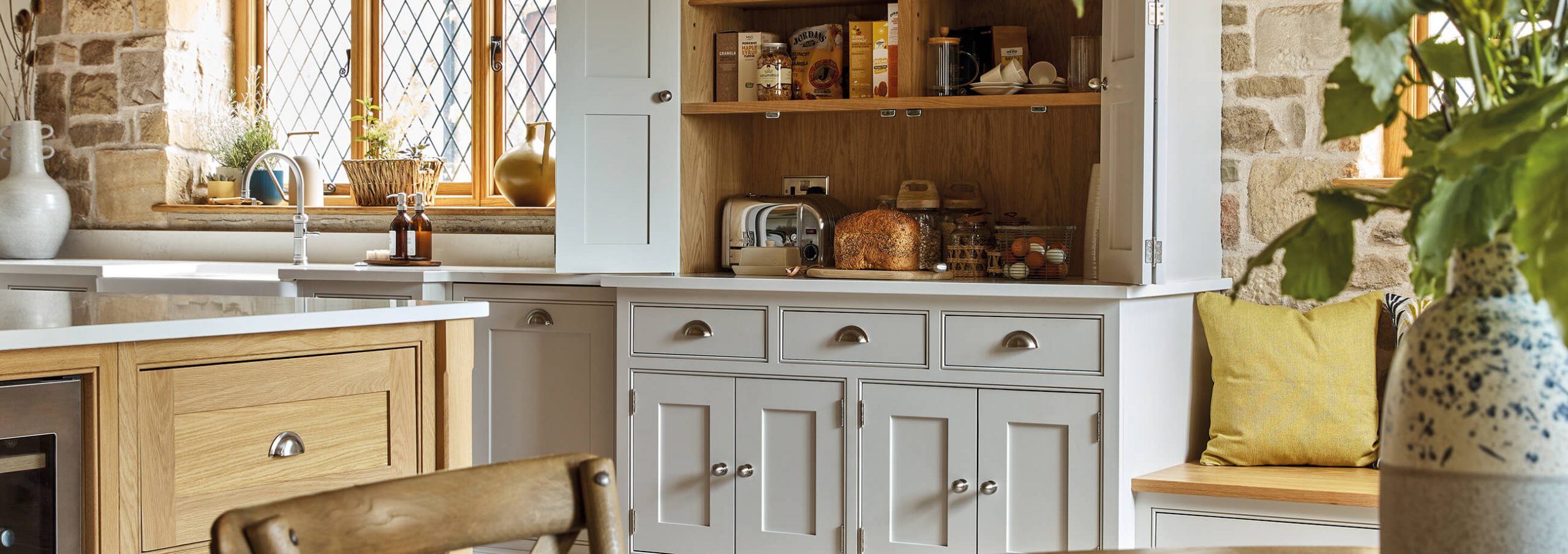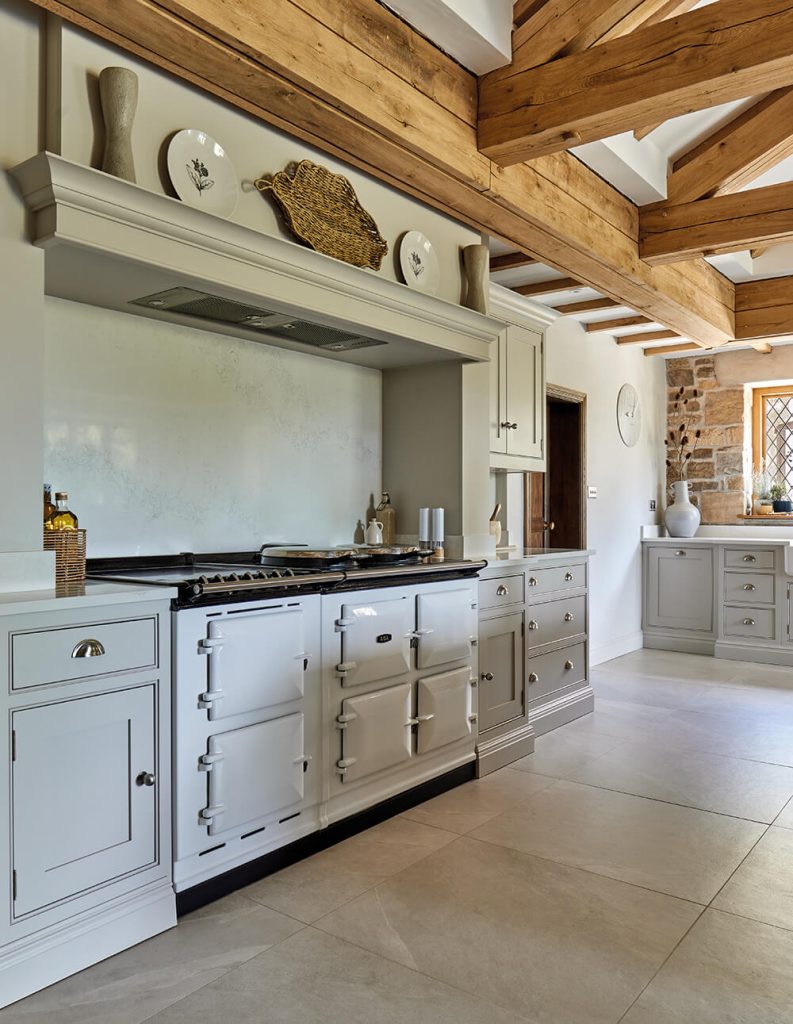Kitchen Hygge: Creating a Cosy Space for the Season Ahead
It’s the season of transformation, as nature dons its golden glow and the air turns crisp and cool. It’s a time when we yearn for warmth, comfort, and a sense of togetherness, and that’s where the concept of kitchen hygge comes into play.
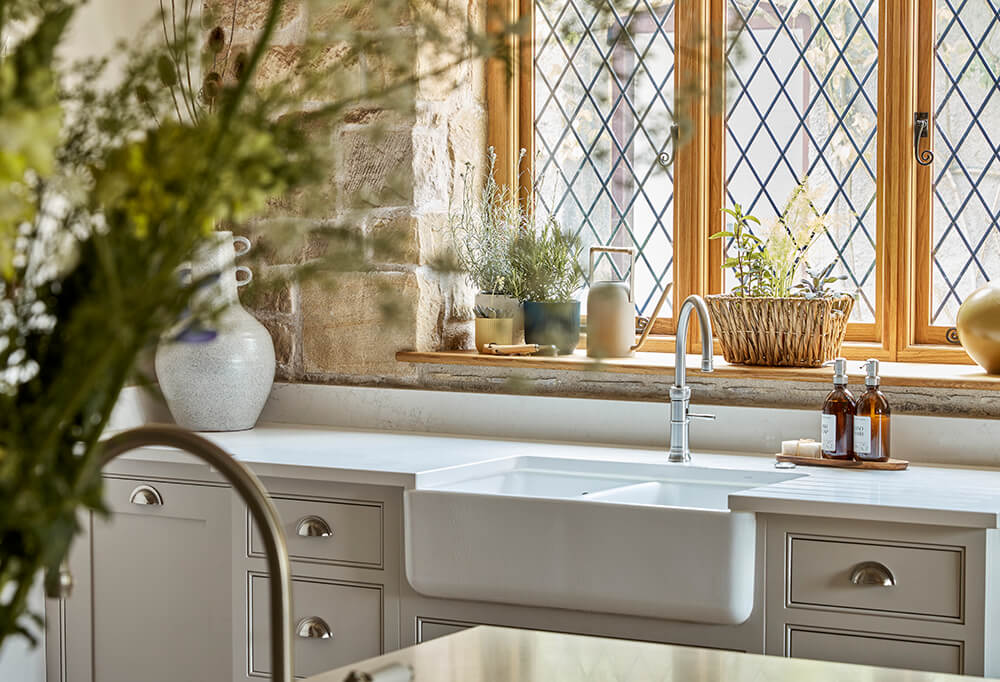
What is Hygge?
Hygge, a word of Danish and Norwegian origin pronounced as “hoo-gah,” encapsulates the art of cultivating a feeling of cosiness, comfort and contentment – especially within the home. As the leaves fall and the days grow shorter, our homes become our refuge, and our kitchens, the heart of this sanctuary. Here, we find solace in preparing hearty meals, catching up with friends and family over steaming cups of tea, and creating memories that will linger long after the season has passed.
Here are some tips to help you bring the spirit of hygge into your kitchen and transform it into a cosy haven.
Soft Textures: Adding a Touch of Comfort
Soft textures are vital in achieving a hygge kitchen. They invite you to hunker down and enhance the overall aesthetic of your kitchen. Start by adding plush cushions to your sofa, sumptuous faux sheepskin to stools, warm rugs underfoot, and soft kitchen towels within easy reach. These tactile elements make your kitchen a welcoming and comforting space to unwind and share memorable moments with loved ones.
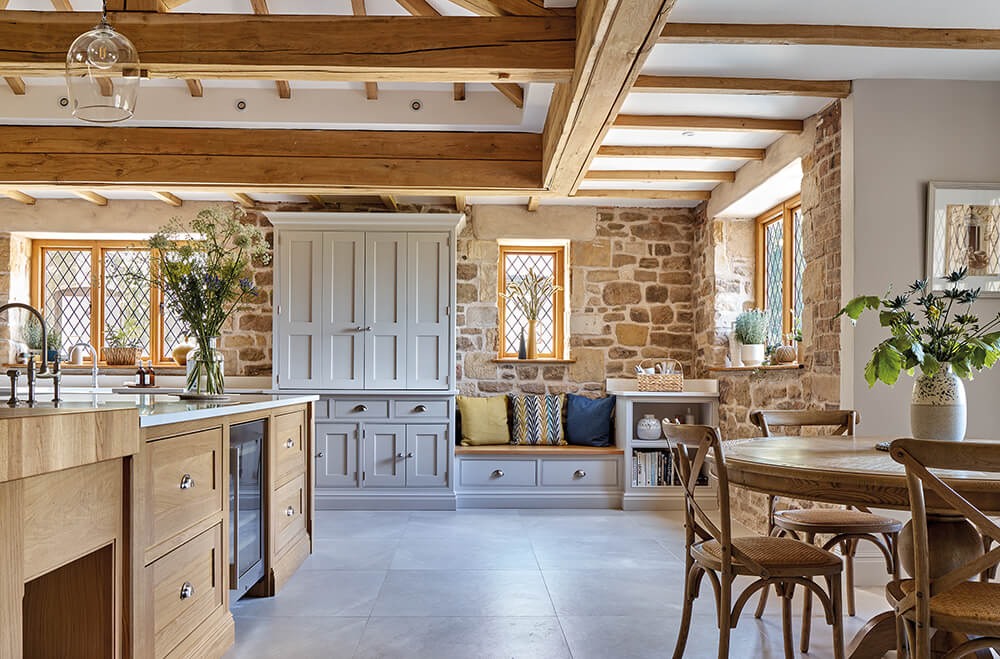
Candlelit Hygge Ambience: Filling Your Kitchen with Warmth
One of the simplest yet most effective ways to infuse your kitchen with hygge is through candlelight. Candles provide a sense of tranquillity and create an ambience that promotes relaxation and togetherness. Scented types can fill your kitchen with a warm, inviting fragrance. You can also arrange hurricane jars and candles on your kitchen island to enhance the cosiness and create a warm, flickering glow.

Seasonal Flavours: Filling Your Kitchen with Aromas
Autumn is the perfect time to embrace seasonal flavours in your kitchen. Cook hearty dishes like soups, stews, and casseroles that fill you and your family with joy. Delicious aromas such as freshly baked bread, cookies or mulled wine wafting through your home also add to the sense of comfort and contentment, enhancing the hygge experience.
Space to Gather: Welcoming Family and Friends
Even in kitchens with limited space, creating an inviting area for communal meals and conversations is crucial. Consider a beautifully crafted wooden trestle table for larger kitchens. In smaller spaces, incorporate a bespoke breakfast nook with bench seating and a space-savvy round table. These additions provide a dedicated space for togetherness and create a welcoming heart in your kitchen.

Rustic Table Settings: Adding Natural Charm
Opt for wooden boards, organic ceramics, and textured linens when creating seasonal tablescapes. These tactile choices connect your decor to the season’s earthy beauty, forging an inviting backdrop for meals and gatherings.
Personal Touch: Thoughtful Decor and Open Shelving
Add a personal touch to your kitchen with decor that sparks joy. Open shelving is an excellent canvas for showcasing your favourite antique finds, family heirlooms, or cherished items. You can even customise your shelving with bespoke brackets or corbels to infuse a rustic touch. Glass-fronted cabinets serve a dual purpose: keeping your shelves organised while displaying your treasured pieces. The key is to maintain a visual flow in your kitchen, considering textures, colours and finishes to create a harmonious whole.
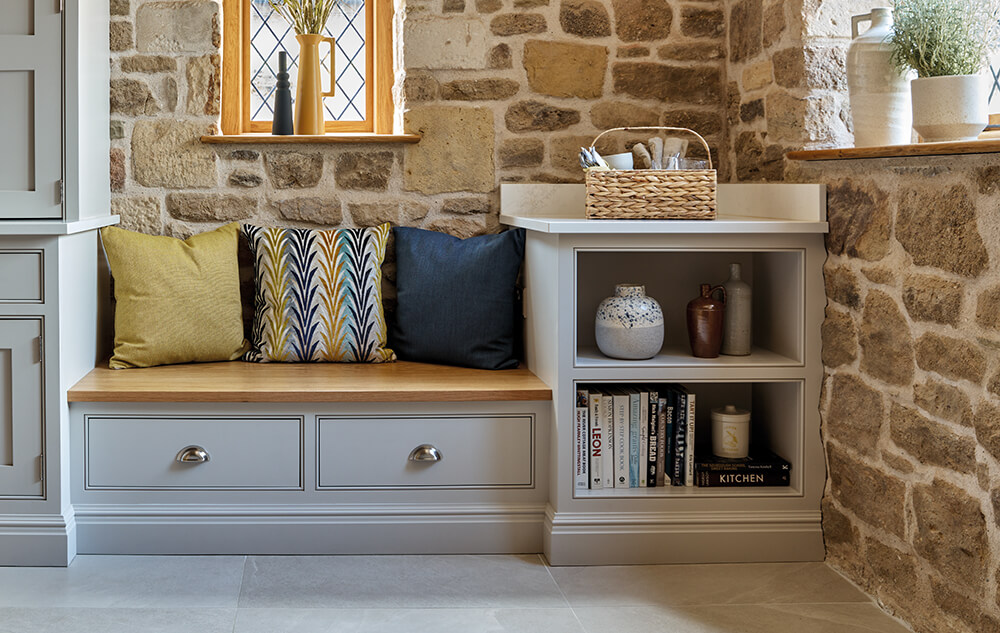
Ambient Lighting: Setting the Mood
Lighting plays a pivotal role in creating a cosy kitchen. Achieving the right balance involves three types of lighting: ambient, task, and accent. Ambient lighting, provided by pendants and wall lights with dimmer switches, offers flexibility for any time of the day. Accent lighting, such as integrated LED lights within glass cabinets or soft light from lamps, sets the mood and creates a warm and inviting atmosphere for any occasion.
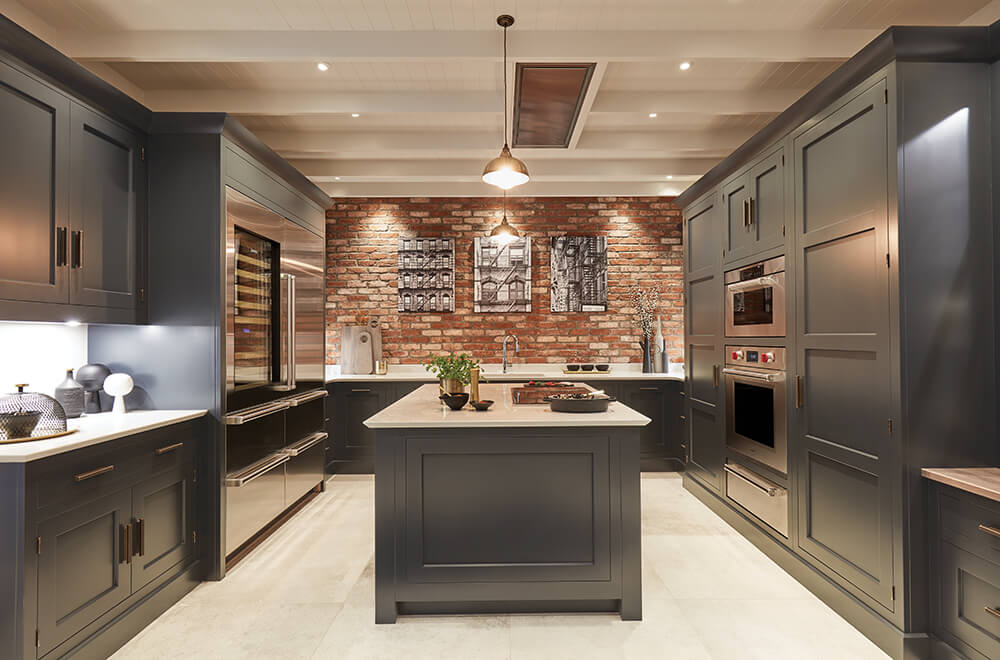
Bringing the Outdoors In: Nature’s Embrace
Nature is a fundamental part of kitchen hygge, and you can easily bring it into your kitchen during the festive season. Add natural foliage wreaths to your doors, adorn table settings with spruce and holly, or drape garlands of pine, eucalyptus, and pine cones over staircases, window ledges, or fireplaces. A touch of romance can be achieved by hanging mistletoe on doorways or from beams and ceilings. Natural plants and evergreens add life and warmth to your kitchen, creating the perfect hygge ambience.
Embrace the season and transform your kitchen into a cosy retreat for you and your loved ones to enjoy.
